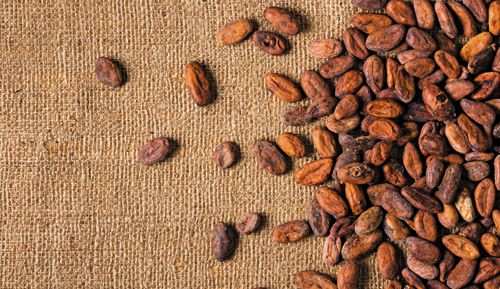Tracing the Origins of Chocolate
Researchers from the Université de Strasbourg, France, have developed a method to discover cocoa bean origin by analyzing chocolate polyphenols using high performance liquid chromatography–diode array detection–mass spectrometry.
Photo Credit: Iprachenko/Shutterstock.com

Researchers from the Université de Strasbourg, France, have developed a method to discover cocoa bean origin by analyzing chocolate polyphenols using high performance liquid chromatography–diode array detection–mass spectrometry (HPLC–DAD–MS) (1).
The ability to trace and authenticate foodstuffs has become increasingly important with several notable scandals bringing the topic into the public consciousness and ramping up its importance in industry. Given the interest in this topic, it was inevitable that a universally popular foodstuff such as cocoa-the main ingredient in chocolate-would require authentication. The price of cocoa is dependent on its origin, with cocoa from locations such as Madagascar, the Caribbean, and various countries from South America to Africa warranting varied market prices because of perceived differences in quality between the products.
Polyphenols are present in high quantities within cocoa and are closely linked to the characteristics and aroma of chocolate products. Polyphenol content is linked to the geographical origin and the cocoa bean variety as well as the processing steps that occur during chocolate manufacture. For these reasons researchers targeted polyphenols as the key to determining the origin and quality of chocolate products. Using a simple extraction technique and HPLC–DAD–MS, researchers developed a method to determine the origin and quality of the cocoa used within a finished chocolate product.
Despite polyphenol loss and degradation from processing, the significant amounts of polyphenol that remain in the final chocolate product enabled researchers to successfully develop a method to determine the origin and quality of cocoa used to produce the chocolate. The extraction method separated polyphenols from the other major components of chocolate, such as lipids, sugars, proteins, alkaloids, and other non-volatile substances. This method is significant because previous research focused on determining this information pre-processing and gives authorities a significant tool to detect food fraud in chocolate in the future. - L.B.
Reference
- A. Cambrai, E. Marchioni, D. Julien-David, and C. Marcic, Food Anal. Methods10(6), 1991–2000 (2016).

A Novel LC–QTOF-MS DIA Method for Pesticide Quantification and Screening in Agricultural Waters
May 8th 2025Scientists from the University of Santiago de Compostela developed a liquid chromatography quadrupole time-of-flight mass spectrometry (LC–QTOF-MS) operated in data-independent acquisition (DIA) mode for pesticide quantification in agriculturally impacted waters.
Distinguishing Alcohol- from Non-Alcohol-Associated Liver Cirrhosis with LC-MS
May 7th 2025A pilot study investigating whether nicotinamide adenine dinucleotide kinase (NADK) expression is selectively diminished in alcohol-associated liver cirrhosis (AC), as well as evaluating its potential as a biomarker for this condition, measured AC and non-AC (NAC). Nicotinamide adenine dinucleotide (NAD+) and nicotinamide adenine dinucleotide phosphate (NADP+) levels in human liver samples were measured using liquid chromatography-mass spectrometry (LC-MS).
Detecting Hyper-Fast Chromatographic Peaks Using Ion Mobility Spectrometry
May 6th 2025Ion mobility spectrometers can detect trace compounds quickly, though they can face various issues with detecting certain peaks. University of Hannover scientists created a new system for resolving hyper-fast gas chromatography (GC) peaks.

.png&w=3840&q=75)

.png&w=3840&q=75)



.png&w=3840&q=75)



.png&w=3840&q=75)


![IMG_4773[1].jpg IMG_4773[1].jpg](/_next/image?url=https%3A%2F%2Fcdn.sanity.io%2Fimages%2F0vv8moc6%2Fchroma%2F6db719ea80519dad8e948ad595b96c3fa3731826-200x207.jpg%3Ffit%3Dcrop%26auto%3Dformat&w=3840&q=75)









